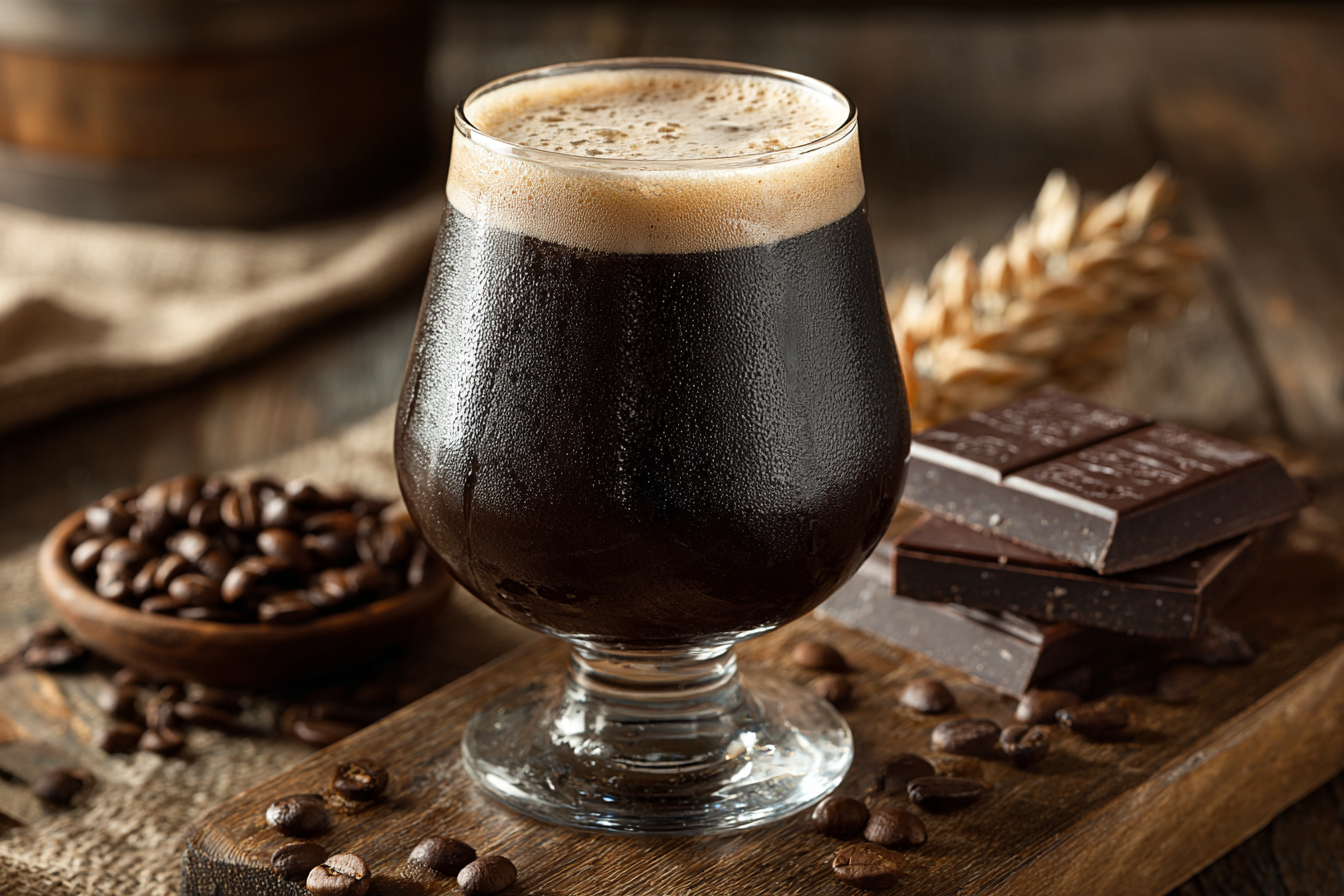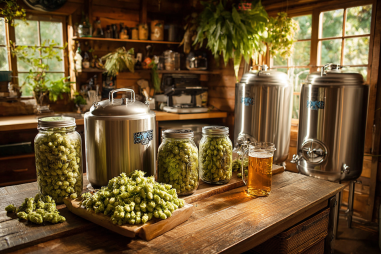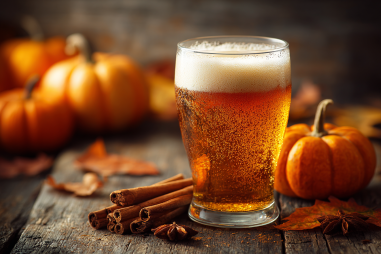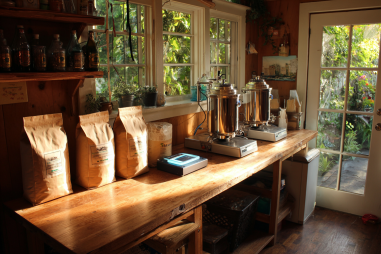American stouts have carved out a distinctive niche in the world of craft beer, celebrated for their bold character and rich complexity. Unlike their traditional counterparts, American stouts boast a unique flavor profile that blends roasted malt richness with bright notes of hops, creating a beer that is both robust and dynamic. Whether you’re a seasoned stout drinker or new to the style, exploring the intricate flavors of American stouts reveals why this beer remains a favorite among craft enthusiasts.
Overview of American Stout
Originating from the classic stout styles of the British Isles, American stout has evolved into a bold and flavorful expression influenced heavily by local craft beer innovation. Fundamentally, stouts are dark ales made from roasted malt or roasted barley, leading to their deep, dark color and roasted flavors. What distinguishes the American stout is the emphasis on articulate hop bitterness and aroma alongside the traditional malt backbone. This contrast creates a more vibrant experience compared to the often smoother, less hop-forward Irish or English stouts. American brewers often experiment with various ingredients and techniques, making the style versatile and full of surprises.
Common Flavor Notes: Roasted Malt, Coffee, Chocolate
At the heart of an American stout’s flavor is the roasted malt profile, which imparts its signature dark color and complex taste. This roasted malt aroma often translates into flavors reminiscent of freshly brewed coffee and bittersweet dark chocolate. The coffee notes range from subtle and smooth to intense and espresso-like, depending on the malt roast level and the brewing process.
Chocolate flavors, especially dark or semi-sweet, contribute a creamy richness that balances the bitter edges of roast. Alongside coffee and chocolate, you might also detect caramel undertones, a byproduct of specialty malts that add sweetness and depth. These combined malt traits offer a multidimensional base that can feel both warm and indulgent, making the American stout immensely satisfying for drinkers seeking complexity.
The Role of Hops in Flavor
One of the defining characteristics that set American stout apart from traditional stouts is the prominent hop character. American craft brewers usually introduce assertive hop varieties, such as Cascade, Centennial, or Chinook, to lend the stout an aromatic and flavor brightness that contrasts with the heavy maltiness. The hop bitterness not only helps balance the sweetness of the malts but also introduces flavors ranging from pine and resin to citrus and floral notes.
These hop profiles create a lively interplay on the palate — the roasted malt and hop bitterness dance in harmony, preventing the stout from feeling too heavy or one-dimensional. Additionally, the aromatic hops can lift the beer’s nose, enticing drinkers with fresh herbal or citrus notes before the first sip even touches the lips.
Influence of Yeast and Fermentation
While malt and hops dominate the flavor landscape, yeast and fermentation add subtle but crucial nuances to an American stout. Most American stouts use clean-fermenting ale yeast strains that allow the malt and hops to shine clearly, without overwhelming fruity esters or phenols. This clarity in fermentation helps highlight the beer’s roasted and hoppy flavors.
That said, some brewers experiment with yeast strains or fermentation conditions to introduce layers of complexity, such as slight spiciness, earthy undertones, or even a mild tartness if wild yeast or bacteria are involved. The fermentation process also affects the mouthfeel, with many American stouts showcasing a smooth, velvety texture that complements their bold flavors.
Variations Within American Stouts
American stout is a broad category that includes several substyles and variations, each with its unique spin on the core flavor profile. For example:
- American Imperial Stout: Bigger, bolder, and higher in alcohol, Imperial stouts amplify the roasted flavors and hop bitterness, often featuring intense chocolate and coffee notes coupled with a warming alcohol finish.
- American Oatmeal Stout: Incorporating oats adds a creamy, smooth mouthfeel and often a softer malt profile, making it very approachable.
- American Coffee or Chocolate Stout: These variants emphasize added coffee beans or chocolate during brewing, pushing those flavor elements to the forefront for a more dessert-like experience.
- Milk Stout (Sweet Stout): Using lactose sugar, this style sweetens the stout, balancing the roastiness with a creamy sweetness that appeals to those less inclined toward dry bitterness.
Exploring these variations allows drinkers to find the version of American stout that best fits their personal preferences.
How to Taste and Identify Flavors
Tasting an American stout involves more than just sipping—it’s about engaging your senses to appreciate its complex layers. Here’s how to get the most from your tasting experience:
- Look: Observe the beer’s color, generally a deep brown to near-black with ruby highlights, and note the creamy tan head.
- Smell: Inhale deeply and try to identify dominant aromas. Do you detect roasted coffee, dark chocolate, caramel, or piney hops?
- Taste: Take a moderate sip and let it coat your tongue. Note the initial flavors (often malt sweetness or roastiness), the mid-palate experience (such as hop bitterness or chocolate), and the finish (dry, bitter, sweet, or balanced).
- Mouthfeel: Pay attention to texture—creamy, smooth, or slightly oily.
- Aftertaste: Does the flavor linger? Is it bitter, sweet, or clean?
Keeping these aspects in mind will enhance your appreciation of the intricate flavor profile that American stout offers.
Pairing American Stout with Food
The bold and complex nature of American stouts makes them excellent companions for a variety of foods. Their intense roasted malt character pairs wonderfully with hearty and flavorful dishes. Some popular pairings include:
- Grilled or roasted meats: The beer’s roasted and smoky notes complement the char and richness of beef, pork, and lamb.
- Barbecue: The slight sweetness and hop bitterness help cut through tangy, smoky sauces.
- Chocolate desserts: A natural match, the stout’s chocolate and coffee undertones echo flavors in brownies, chocolate cake, or tiramisu.
- Aged cheeses: Sharp cheddar or blue cheese offers a nice contrast to the stout’s robust flavors.
- Spicy dishes: The beer’s bitterness and carbonation can refresh the palate when enjoying spicy barbecue or chili.
Experimenting with pairings can reveal new dimensions of both your meal and your beer, making each sip and bite more enjoyable.
Popular American Stout Examples
To get a true sense of the American stout flavor profile, sampling notable examples from respected breweries is a great way to start. Here are some popular American stouts that showcase the style’s diversity and richness:
- Founders Breakfast Stout: Known for its intense coffee and chocolate flavors layered over a bold malt base.
- Deschutes Obsidian Stout: A balanced stout with rich roast notes and moderate hop bitterness.
- 21st Amendment Brew Free! Or Die IPA Stout: Combines stout maltiness with a hoppy kick, highlighting American craft creativity.
- Goose Island Bourbon County Stout: An imperial stout aged in bourbon barrels for added depth and complexity.
- Left Hand Milk Stout Nitro: Creamy and smooth, with sweet lactose balancing the bitter roast in a more approachable format.
Trying these or local equivalents can help deepen your understanding and enjoyment of American stouts.
Embracing the Flavor Complexity
American stouts stand out in the beer world for their skillful balance of bold roasted malt flavors and vibrant hop character. They invite drinkers to savor a spectrum of tastes—from bitter coffee and rich chocolate to caramel sweetness and piney hops—often within a single pint. The nuanced influence of yeast and fermentation, combined with creative variations, makes each American stout a unique journey for the palate.
Whether you enjoy stouts for their comforting warmth or their intriguing complexity, exploring the flavor profile of American stouts opens up a deeper appreciation of the craft behind these bold beers. So next time you pour an American stout, take time to taste, smell, and savor—all the rich layers waiting to be discovered.







